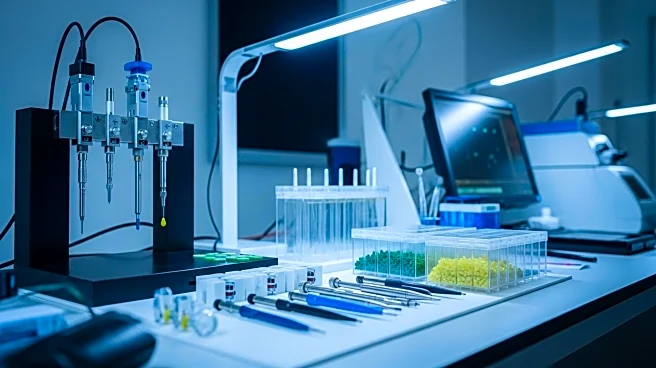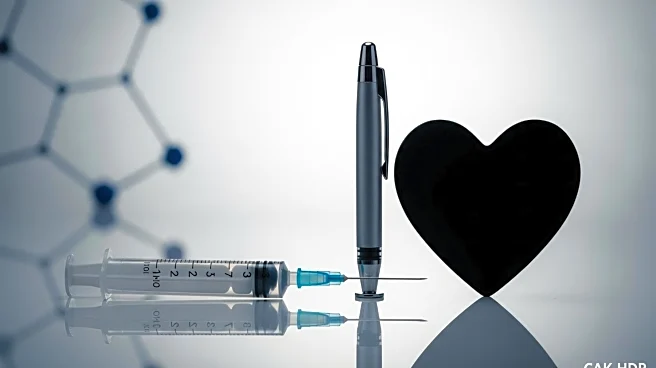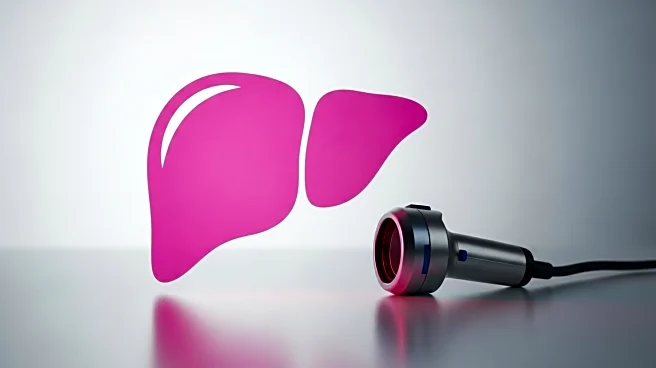What is the story about?
What's Happening?
The market for Nonalcoholic Steatohepatitis (NASH) therapeutics and diagnostics is experiencing significant growth as healthcare systems worldwide address the increasing prevalence of lifestyle-related liver disorders. NASH, a severe form of nonalcoholic fatty liver disease, is linked to obesity, type 2 diabetes, and metabolic syndrome, presenting a substantial unmet medical need. Currently, there are no FDA-approved therapies for NASH, prompting pharmaceutical and biotech companies to pursue innovative drug candidates. Several promising drugs, including obeticholic acid, elafibranor, and semaglutide, are in late-stage clinical trials. Additionally, advancements in non-invasive diagnostic technologies are reshaping early detection methods, with companies like Siemens Healthineers and GE Healthcare leading the way.
Why It's Important?
The development of effective NASH therapeutics and diagnostics is crucial due to the disease's association with rising obesity and diabetes rates, which contribute to increased liver-related morbidity and mortality. The absence of approved treatments highlights the urgency for breakthrough therapies, which could significantly impact patient care and open substantial revenue opportunities for pharmaceutical companies. The expansion of non-invasive diagnostic solutions is also vital, as they offer safer and more accessible options for early disease detection, potentially improving patient outcomes and reducing healthcare costs. The competitive landscape is dynamic, with major players like Intercept Pharmaceuticals and Novo Nordisk racing to bring the first approved NASH therapy to market.
What's Next?
Analysts predict that the first FDA-approved NASH drug could be available by 2025-2026, marking a pivotal moment in hepatology. This approval would likely drive further investment and innovation in the field, encouraging partnerships between drug developers and diagnostic companies to provide integrated patient solutions. The growing focus on precision medicine and biomarker development could enhance treatment strategies, while government and NGO initiatives promoting liver health awareness may support broader adoption of new therapies and diagnostics.
Beyond the Headlines
The pursuit of NASH therapeutics and diagnostics also raises ethical and economic considerations. The high cost of drug development and clinical trials may limit access to new treatments, particularly in regions with less advanced healthcare systems. Additionally, the focus on lifestyle-related diseases underscores the need for public health initiatives addressing obesity and diabetes prevention. As the market evolves, stakeholders must balance innovation with equitable access to care, ensuring that advancements benefit diverse patient populations.
AI Generated Content
Do you find this article useful?














